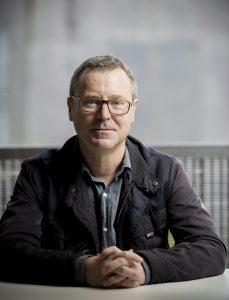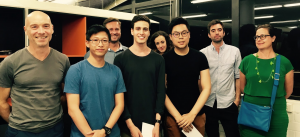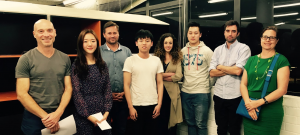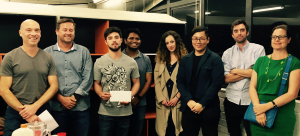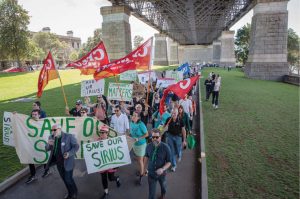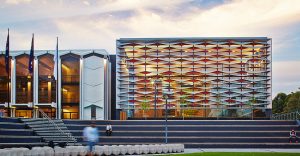At the conclusion of his two-year term, Andrew Nimmo, partner at lahznimmo, has handed the NSW chapter presidency of the Australian Institute of Architects (the Institute) to the unanimously supported NSW council member Kathlyn Loseby.
Ms Loseby graduated from the University of Sydney with an honours degree in architecture and has worked in the UK and Sydney for a number of leading architectural firms. With an MBA(Exec) from the AGSM and a Graduate of the Australian Institute of Company Directors, she is now the chief operating officer of Crone Architects, a major national firm.
Mr Nimmo congratulated Ms Loseby on taking the role. ‘Kathlyn has made a tremendous contribution to the Institute as a councillor, convening the large practices forum and serving on the awards and honours committee.
‘We have worked together very successfully on the chapter council and I look forward to Kathlyn’s seasoned leadership, her insight and the energy and determination she will bring to realising her vision for our members and the profession. I also want to thank Crone Architects for supporting Kathlyn in this voluntary role.’
Ms Loseby has worked on a number of major projects, including:
- AI Faisaliah Complex – Riyadh, Saudi Arabia
- Daewoo Headquarters – Seoul, Korea
- Conrad Hilton Hotel – Cairo, Egypt
- KLCC Apartment Towers – Kuala Lumpur, Malaysia
- British International Junior and Senior School – Tian Jin, China
- Sydney West Letter Facility
- Independent Living Wahroonga
- RPA Hospital extension exterior wall
- Yuhu One Circular Quay
She brings this deep professional experience to her role as leader and public face of the architectural profession in NSW.
Ms Loseby outlined three key objectives that her presidency will prioritise.
‘The first is procurement. Repeatedly we see the emphasis on procurement practices that favour reduced time and cost at the expense of quality. The outcome being increased cost for maintenance, financiers, the insurance industry and ultimately the whole community. I would like to see the skill and expertise of the architectural profession at the forefront of improving the quality outcomes in this situation.
‘Secondly, we need to focus on advocacy. Going forward, the Institute will continue Andrew’s important work with government and commercial organisations to improve their efficient engagement of architects as advisors, designers and administrators. We will strive to raise recognition of the breadth and depth of value that architects can bring clients and the community through good design in the places they live, work and relax.
‘Our third objective is equality. As president, I will also be leading the Institute in forging pathways to a rewarding and supported return to practice for architects who have taken a break, typically to start or raise a family. We want to ensure everyone has the opportunity to thrive and grow within the profession. As a special advisor to the NSW Champions of Change for Crone in 2018, I am especially proud of how this initiative has developed positive policy resources available for all architectural practices to utilise, in particular the Flexible Work Policy.’
On behalf of all NSW members and Institute staff, Ms Loseby thanked Mr Nimmo for his dedication and leadership over the past two years.
‘During his term Andrew has spearheaded a number of important advocacy campaigns around issues including the misuse of the Opera House sails for advertising and unfair procurement practices.
‘Andrew has also made an invaluable contribution to establishing a more robust and effective governance structure within the chapter while strengthening the voice of the profession among government and industry.’
Ms Loseby takes up her term of office Tuesday 4 February.

Follow Kathlyn Loseby on Twitter at https://twitter.com/NSWChapterPres
For media enquiries and interviews contact:
Kate Concannon
Advocacy & Communications, NSW
d: + 61 (2) 9246 4017
e: kate.concannon@architecture.com.au

